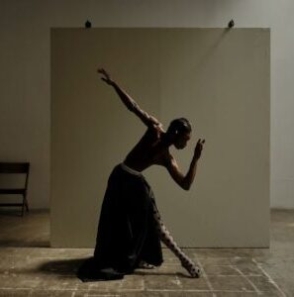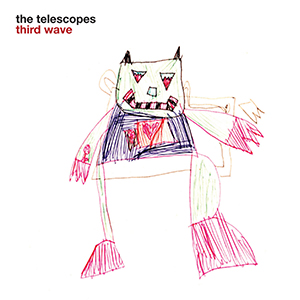Little Steps Make for a Big Dance.
By Jo Phillips
Passinho the Brazilian dance literally means little steps or small steps and describes the short, fast, twisting style of a street dance that grew from the favela’s youths across not just the whole country but across the world even being shown during the Olympic opening ceremonies in Brazil and the UK.
Zona Franca ©️ Renato Mangolin
From obscurity via stigmatization to international fame, in a short amount of time, this iconic speedy foot-worked dance has grown. It may well have been around and known as ‘funk parties’ since the early 2000s but it took dedicated dance troups to spread the movement globally.
During the early days dancers learned by word of mouth about one another and baile funk (funk party) became locales for inter-favela dance duels. While baile funk parties are thought of as the birthplace of Passinho, many battles actually occurred on a small side road by a shopping Mall of all places. This historical spot was where many dancers gained their reputations, battling in one of the many informal rodas (circles) formed every Saturday.
By 2006 dance groups were founded but by 2008 a dancer called Beiçola from Jacarezinho posted a YouTube video of him and his friends dancing.
The video spread rapidly, inspiring favela youth across the city to use social media to share similar dance videos, and Passinho was transformed almost overnight from an insulated dance to a full-on cultural phenomenon.
In 2011, the first organized Batalha do Passinho (Passinho Battle), took place at the SESC cultural center in Tijuca. These battles legitimized Passinho as a dance style. It began to gain international exposure when a group of dancers from the Passinho battle performed at the closing ceremony of the London 2012 Paralympic Games. Then it spread across the world and saw elements of it utlised in pop videos and films. During the 2014 World Cup, the dance was featured in the BBC‘s official video montage with the New York Times newspaper calling it the “soundtrack of Rio.”
So what does this dance look like? literally meaning “little step,” is rapid foot movements, sharp twists from the waist. A fusion of breakdancing and funk is added with traditional Brazilian moves like samba, frevo, and capoeira. The musical style included Funk carioca, a fusion of American funk beats and Afro-Brazilian rhythms that originated in the 70s and 80s. Performed unchoreographed, with dancers improvising on the spot to the music. dancers gaze at the floor rather than looking forward or up which in the world of dance is not seen.
That may well be because, at its very core, the movement has been politized as well as sexualised and has even been homophobic; because of this, it has been in the past, censored. It had even faced criminalization and criticism for lyrics that push the limits of social acceptability in terms of violence, drugs, and sexual references.
But the artists say that they are speaking from their reality and point to other musical genres that also include taboo themes, but never seem to face the same magnitude of backlash. For them, Passinho is an expression of the criminalization of poverty.
It has in the past and still does offer young black men, a demographic most likely to fall victim to police violence and coercion into drug trafficking, a refuge from violence and alternative means of gaining status and earning money.
Up until 2009, in the Rio de Janeiro state, the baile funk movement was criminalised under law 3410 which restricted the organization of baile funks by requiring that organizers install metal detectors and only host Bailes with the presence of the Military Police as well as other rules. In 2009 a victory against this earlier ruling was made by the passage of state law 5543, which officially recognizes funk as a cultural movement and prohibits discrimination against funk. For the dancers and their peers, Passinho is still inherently a political statement, an assertion of pride for both black and Favela culture within a country that historically stigmatizes both.
Now if you are UK-based there is a unique opportunity to get up close with this movement. Her much anticipated and long-awaited London debut Alice Ripoll and the dance company Cia Suave from the favelas of Rio de Janeiro is happening this Thursday (2nd Nov) at the Southbank Centre’s Queen Elizabeth Hall at 730pm
Born in Rio de Janeiro, Alice Ripoll initially studied psychology before moving into the world of dance, motivated by curiosity about the body’s capabilities and a desire to explore movement.
Image Renato Mangolin, Alice Ripoll & Cia Suave: Zona Franca
She launched her choreographic career after earning a degree from the Escola Angel Vianna which is a major choreographic and motor function rehabilitation center. Her works combine contemporary dance and Brazilian urban dance through research that offers movement to represent dancers’ experiences and inner memories. Alice is the head of both REC and SUAVE and her works have been performed in her own country as well as in global venues.
Through dance, this vibrant piece explores the political tensions and transitions of Brazil with on one side President Bolsonaro and the other former President Luiz Inácio Lula da Silva (commonly known as Lula) from the perspective aspirations of Brazilian youth. A fervent piece that tells of the hopes of a disinherited generation yearning to reinvent itself.
Zona Franca Art Happens Image Renato Mangolin Copyright Lynn Marcoen
A space created through movement where both performers and audiences can find freedom, at a time when darker areas are growing across the world: areas of social, economic, and political struggle. After years of agony, it’s time for rebirth. Her empowering work shines a light on new possibilities, social impact, and collective hope.
Including the Brazilian dance style Passinho, this work presents elements of contact dance, theatre, vocal research, African dances, Afro-house, Sabala, TikTok, and dances from the north and north-east of Brazil, such as Pisadinha and Brega funk.
Image Renato Mangolin Zona Franca
Inherent to the Passinho movement is a sense of community and belonging. Many dancers refer to their peers as “family” and veteran dancers feel a sense of responsibility to guide the next generation, not only in dance movements but in life choices.
But while Passinho is gaining exposure on the stage and in cinema, artists are still fighting for recognition in the formalised art world and for the facilities to train. Many performance dance groups, still do not have a studio space of their own to train in. Passinho’s history is far from complete, in fact, many dancers say the movement is only growing.
The performance by Alice and her troupe, this week will be performed to an audience who get to be close up and personal and feel the energy power, and freedom from this influential regional spirit.
Tickets available for the dates 2-4th November at SouthbankCentre.co.uk here
www.southbankcentre.co.uk Twitter: @southbankcentre Instagram: @southbankcentre Facebook: @southbankcentre @southbankcentre #ZonaFranca @ripoll.alice
If you enjoyed reading Little Steps Make for a Big Dance then why not read To Know Warhol is to Love Him here
.Cent Magazine London. Be Inspired; Get Involved









